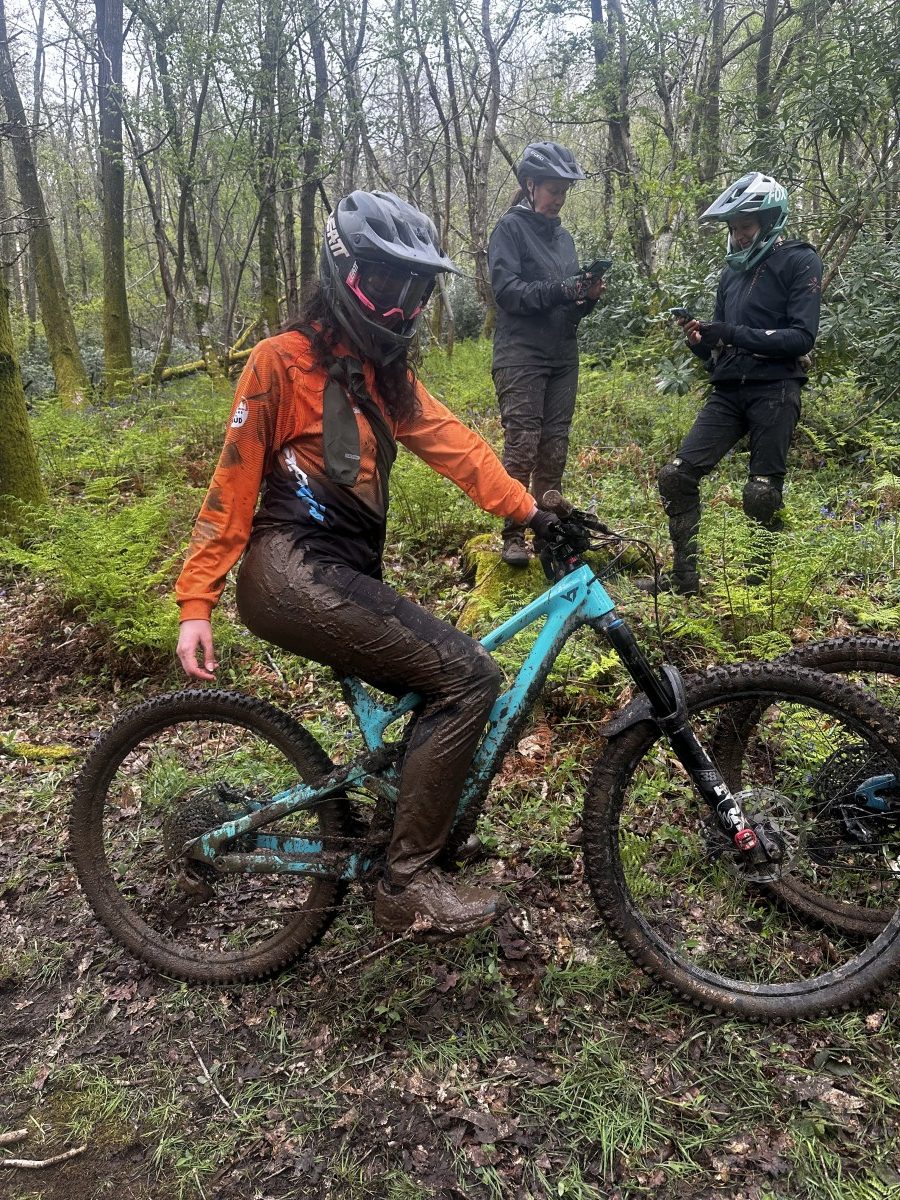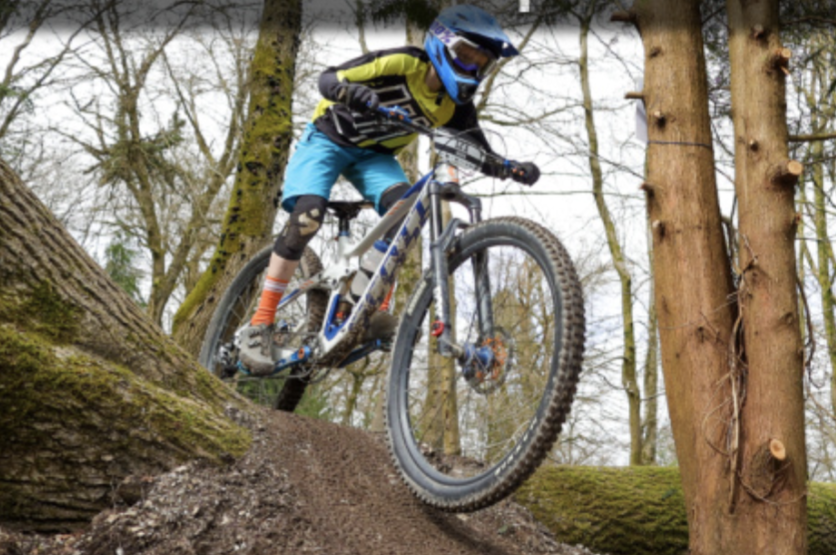
by hattenburrow | Jun 3, 2024 | Adventure, Biking Adventures
Mountain biking is an excellent form of exercise that offers numerous physical and mental health benefits. Here are some reasons why, we think, you should try mountain biking:
Physical Benefits:
Cardiovascular Fitness: Mountain biking is an intense aerobic activity that gets your heart pumping and improves cardiovascular endurance. It can provide both moderate and high-intensity cardio workouts depending on the terrain.
Muscle Strength: It engages and strengthens multiple muscle groups including your legs, core, and upper body. The constant pedaling works your quads, hamstrings, and calves, while navigating obstacles and maintaining balance strengthens your core and arms.
Weight Management: Mountain biking can burn between 600-800 calories per hour, making it an effective workout for weight loss and management. The more intense the ride, the higher the calorie burn.
Joint Health: Unlike high-impact activities like running, mountain biking is low-impact and puts less stress on your joints. It can improve joint function and mobility by strengthening the surrounding muscles and ligaments.
Disease Prevention: Regular exercise like mountain biking can reduce the risk of developing chronic conditions such as heart disease, stroke, type 2 diabetes, and certain cancers by up to 50%.

Mental Benefits:
Stress Relief: The adrenaline rush and immersion in nature can provide an immediate and measurable reduction in stress levels. The physical exertion also releases endorphins, improving mood.
Improved Focus: Mountain biking requires intense concentration, helping you achieve a “flow state” where you are fully present in the moment. This can quiet the mind and provide a mental break from daily stresses.
Sense of Adventure: With the ability to explore new trails and terrains, mountain biking offers a sense of adventure and excitement. It allows you to connect with nature and experience the great outdoors.
Social Connections: Mountain biking can be a social activity, providing opportunities to build meaningful friendships and share challenges with like-minded individuals.
Mountain biking is an addictive and rewarding sport that offers a full-body workout while allowing you to enjoy the great outdoors. It provides numerous physical and mental health benefits, making it an excellent activity to try.

Why not book a coaching session or guided ride with us this Summer and see how awesome mountain biking is for yourself! Simply contact us for more information.

by hattenburrow | May 13, 2024 | Racing
Southern Enduro, Milland Race Report by Demi
It was a super wet, cold, loose and muddy day. The trails are super fun at Milland but I struggle with riding in wet/loose conditions. I also need new tyres! Practice was cold with a couple of hard falls and I didn’t have a long wait between my practice and my race runs.

So I found I got pretty exhausted, riding with a group of fab ladies made it enjoyable and gave me more motivation to get through. Buy I actually found the day mentally and physically exhausting.
Happy to just make it through and even be third in my category.
Thank you to our sponsors Windwave, RightBike, Beyond the Mud, Southern Enduro, Beyond the Studio Pilates and Melon Optics.


by hattenburrow | May 7, 2024 | Racing, Uncategorized
We arrived at the race 1.5hrs early so that we were able to walk stages 1,2 and half of 3. I appreciated the chance to see the stages as there were no practices runs for this race.
As I was in the queue for the start of the race I was feeling really excited to get riding and have a great time.
I was set off to start on stage 2 and told myself to take it easy on the first run.
My first run on stage 2 set off to a good start with a decent pace, the track was good but not ridden in yet so was tricky to work out lines therefore on an off camber turn I went out wide and lost some time. The second run was faster.
The subsequent runs on stage 1 went well, the track had been better ridden in so line choice was easier. I was able to set a good time for both of the runs.

Stage 3 was next the first corner was looser than I expected so front wheel slid out but I saved it with my foot down. A sandy berm caught me off guard but I managed to stay on track. The rest of the run was fast.
I was flying in the second run until I caught up with another rider which cost a couple of seconds. I was able to pick up the pace once I passed them.
Stage 5 was next, I really enjoyed it as it was a mix of flow and tech on both runs I got a good start, then was able to keep the pace throughout the whole run. Both runs were consistent.
Stage 4 was last, it went well, I pushed as hard as I could. It was another nice track.
I ran a couple of re runs on stages 1&2 to try and improve my time, happy to have made my way to 4th position. A great day riding.

by hattenburrow | Apr 19, 2024 | Racing, Uncategorized
Southern XC R 1 31.3.24
Couldn’t wait to race since this was the first Southern XC and I was hoping the course improved from last year. We arrived very early so lots of time to practice the course which helped.
The race went to plan (pushing the pace to try and get a gap) until I hit a slippery root at the wrong angle, slipped and hit a tree I got winded and my handlebars got twisted so it took a while to get back up by which point I was in fourth, I almost closed the gap to third but by then I had ran out of energy.
Despite that, I learnt lots. I had had a good start and fast four laps, holding my lead throughout. Maybe it was bad tactics that made me crash so I’m going to try an improve by being calmer (so I didn’t crash) and not giving up after my crash.
I’m looking forward to round 2 at the end of April.
Southern Enduro 7.4.24
I was really excited for this race but wasn’t expecting much as it was my first enduro. Practice went well so I was super excited, having the rest of the BTM team there was great and really helpful to talk about different lines and options on the track.
My best bit was hitting one of the important high lines on stage 2 plus having a great mistake–less run on stage 4 on which was a slippery and technical track.
On stage 3 I slipped off line and on stage Two I over braked into a corner so had to waste energy getting back up to speed. Overall, it was a really fun first enduro race and it went well apart from those few small mistakes and I still managed to get 4th in the U13’s – really happy with that!
I would like to improve my jumping for next time so I can hit some of the bigger ones like on stage 5 and maybe work on my line choices.
Thank you to my sponsors: Windwave | Right Bike | Southern Enduro | Melon Optics | Beyond the Mud


by hattenburrow | Apr 17, 2024 | Racing
Southern Enduro Round One Queen Elizabeth Country Park – Hampshire.
Arriving
When I arrived at the event, I was very excited but also quite nervous. We met up with my new race team beyond the mud, at the tent Rafe had set up for us. It was great to meet with the team again and Rafe made sure to let us all know what was going to happen.
Practice
We left for practice and I was very exited to ride the trails that I would have my first race on. Charlie, Jacob and I started on stage 5 which was very fast and jumpy, which I liked a lot. Then Rafe and Demi joined us on stage 4. Stage 4 was similar in speed to stage 5 with just a few less big jumps. We then went over to stage 3 which was again quite a fast one but it was a bit more rooty and technical. Penultimately, we headed over to stage two which started off slow and pedaly then fast and technical in the middle section. Finally we went over to stage 1 which again started quite slow and pedaly but then picked up speed in the latter part of the course. We all headed back to camp and made sure to flue up and keep warm!

The race
At the start gate of stage 1 I was very nervous, however as I started to pedal towards the first berm it was like a weight had been lifted from my shoulders and I was at home again, shredding my bike!
The first half was a bit slow but as soon as I got near the road crossing, it started to pick up in speed and I was loving it. Unfortunately at the last 50m or so my chain came off but I knew that it wasn’t far from the finish so I just rolled with it.
Stage 2 – I was a lot more exited then nervous on this one and I had a good start, got my foot down and smashed through the 1st section, when it came to the road crossing I listened to Rafe’s advice and stuck to the high line unfortunately I got my pedal stuck on the tree roots costing me a few seconds. The rest of the stage was good.
Stage 3 – started off fast however I missed the first shortcut and had to hit the drop, I think this caused me to get a bit agitated about getting the next short cut, which might of cause a bad line choice after the second short cut causing me a crash which costed me about 30 seconds.
Stage 4 – went all well and I felt fast.
Stage 5 – also went well I was a bit on the fence with some of the jumps so I just decided not to hit them (next time I think I will have a better look at any jumps so that I am more confident) I came 22/45 which I think is a good place for my first race!
Thank you to our sponsors: Southern Enduro | Windwave | Right Bike | Melon Optics | Beyond the Mud









